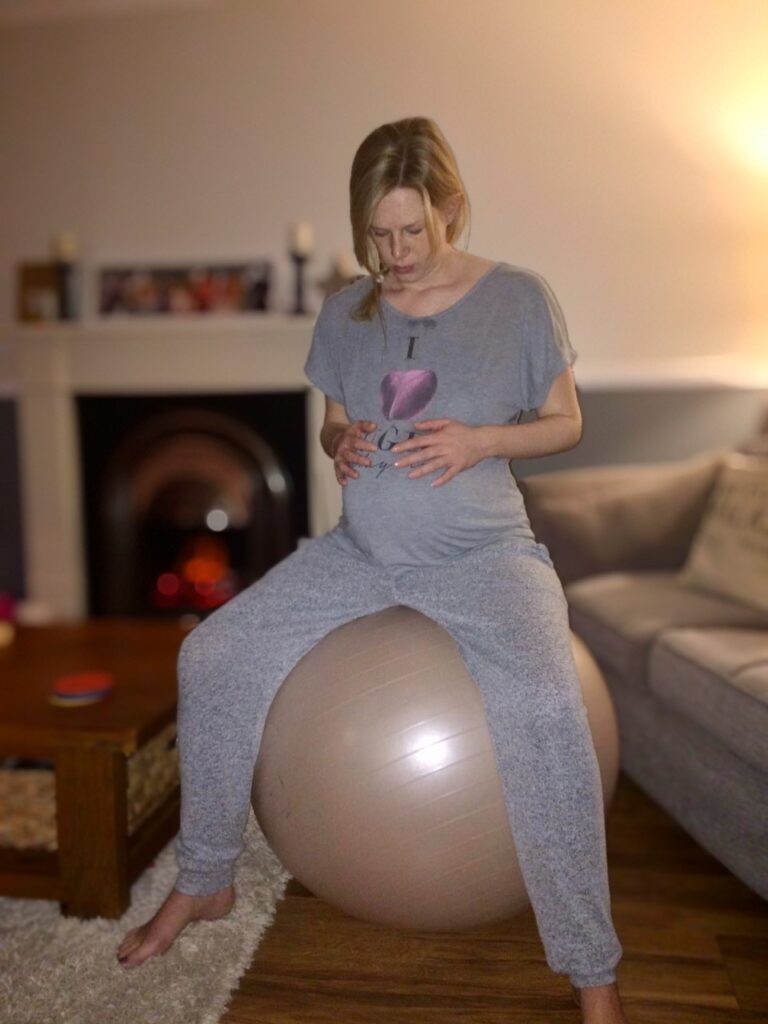Contents

This information is for mothers who are over 37 weeks with a low risk pregnancy. If your pregnancy is considered high risk or you are less than 37 weeks pregnant, please contact us if you think labour has started or if there is anything you’re worried about.
What is the latent phase of labour?
The early stages of labour are known as the latent phase. Before labour starts the cervix is long, firm and closed. The latent phase is the very early part of the first stage and during this time the cervix thins and opens to 4cm. The next part of labour is the ‘active’ phase or you may hear your midwife describe this as ‘established’ labour. In the active phase contractions should continue until baby is born.
Both ‘latent’ and ‘active’ phases are in the first stage. The latent phase can last several days before active labour starts. Some women may feel backache and cramping at this time or they may have periods of contractions lasting a few hours which can stop and start again the next day. This is normal. The contractions may become more noticeable and frequent lasting 35-40 seconds, while some women may notice nothing at all.
It is important to remember the latent phase can last a long time, especially for first time mums. It can become exhausting and it helps if you stay as relaxed as possible during this time. The most appropriate place for women during latent phase of labour is in the comfort of their own home.
What signs can I expect to tell me labour is beginning?
Every individual has their own rhythm and pace in labour, some may not be aware of early contractions and quickly proceed to established labour. Some feel frustrated, tired and emotional during the latent phase whilst they await active labour to commence. Others can feel excited, on edge and not ready, these are all normal feelings.
It is normal during the latent phase to experience the following:
Show – You may or may not pass a show (mucus plug). As the cervix thins and opens the mucous protecting the entrance to the womb comes away and many women experience a ‘show’ from the vagina. The mucous can be clear, pink or streaked with small amounts of blood. Call your local unit if there is any more than a small amount of blood. A show is a sign your body is preparing for labour but the actual birth is likely to be some time away. You can experience a show several days before labour starts. Some women will not experience a show until active labour starts.
‘Waters breaking’ – During pregnancy the baby is surrounded by amniotic fluid or ‘waters’. The first sign for some women is their waters break. Around 15% of womens waters rupture (break) before labour starts. Most women’s waters tend not to break until closer to the baby being born, both of these are considered normal. This may be felt as a gush of fluid or a slow trickle. The colour of the ‘waters’ should be clear. If you are unsure if your waters have broken put a sanitary pad on and observe. Phone your midwife or local birth unit if your waters have broken or you are unsure.
Contractions – In the latent phase, contractions may start and stop, this may continue for several hours and not become stronger. You may have bouts of contractions lasting a few hours which also start and stop. You may have contractions which are variable in strength and frequency and are often more than 5 minutes apart, they can last 30-40 seconds and be irregular in pattern. It is appropriate to wait at home until contractions to become longer, stronger and closer together. If you are not coping with the intensity of the contractions you should phone your midwife or local birthing unit for advice and support.
Latent-Labour-Phase-graphic3What can I do during the latent phase of labour?
There are many ways to help yourself during the latent phase of labour. Staying calm and relaxed is very important for enabling the hormones to do their work.
- Keep your breathing slow and steady to save energy. We know that when you become anxious or stressed these hormones can interfere with the process of labour establishing. Labour is as much a psychological process as a physical one so relaxation, staying calm, being prepared and well informed is important.
- Warm baths or showers can be soothing, relaxing and relieve some discomfort.
- Stay nourished to maintain your energy levels with light carbohydrate meals at regular intervals like rice, pasta, cereals, bread and bananas. Stay hydrated with water. Isotonic drinks will also add to your energy levels and help keep you hydrated.
- It is important to stay active without exhausting yourself. Walk with your birthing partner and stop if you have a contraction. Active upright positions will enable gravity to help your baby rotate and descend through your pelvis. Rocking your pelvis and rotating your hips can help. Alternate this with periods of rest. If contractions stop try to rest or get some sleep. Don’t waste your energy trying to get them going again as they will commence again when your body is ready.
- Experiment with positions you find comfortable.
- You may be more comfortable having your birth partner present through this stage for extra support. The extra support and reassurance can be helpful. Back massages can be useful for backache. Your birth partner can also reassure other family members to encourage more support.
- You should remain vigilant to your baby’s movements throughout the latent phase and if you think that your baby is not moving as you would expect then you should speak to a midwife.
- Distraction through listening to music, watching TV and using relaxation techniques can be helpful.
- Some women hire a TENS machine and find the sensation acts as a good distraction during contractions. Paracetamol is a very useful option for this stage. 2 tablets every 4-6 hours but no more than 8 tablets in 24hrs.
What can my birth partner do?
- Help distract and take your mind off things.
- Massage your back.
- Prepare food at regular intervals, little and often and carbohydrate based.
- Give lots of support and encouragement.
- Don’t spend too much time counting contractions as this may put you under pressure. Keep the situation as calm and normal as possible.
When should I seek further advice?
Although evidence suggests most women do best and are less likely to have some interventions if they stay at home, it is recognised that some women experiencing a longer latent phase can become physically and emotionally exhausted. A small minority of women also feel anxious at home. In this situation your midwife may visit or you may be invited to attend your local unit for assessment. If after assessment you are found to still be in latent phase and all the findings are normal then you would be encouraged to remain/return home. If you do not wish to return home you may be able to remain in your local maternity unit for support.
You should contact a midwife:
- If your waters break.
- Any vaginal bleeding.
- If your baby’s movements have changed.
- Your contractions are regular and coming about 3 in every 10 minutes.
- If you think you are in active labour and are not sure when to come to hospital.
- If you’re worried or concerned about anything else.
Contact Numbers
Midwives Unit, Aberdeen Maternity Hospital – 01224 551948
Inverurie Community Maternity Unit – 01467 670920
Peterhead Community Maternity Unit – 01779482445
Triage, Aberdeen Maternity Hospital – 01224 558855
Maternity Unit Dr Grays Elgin – 01343 567220
